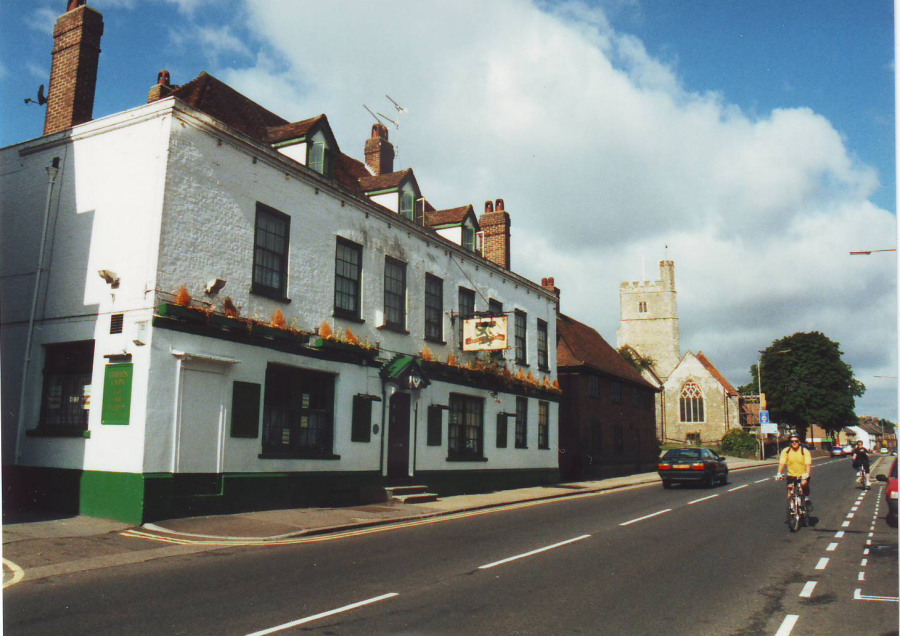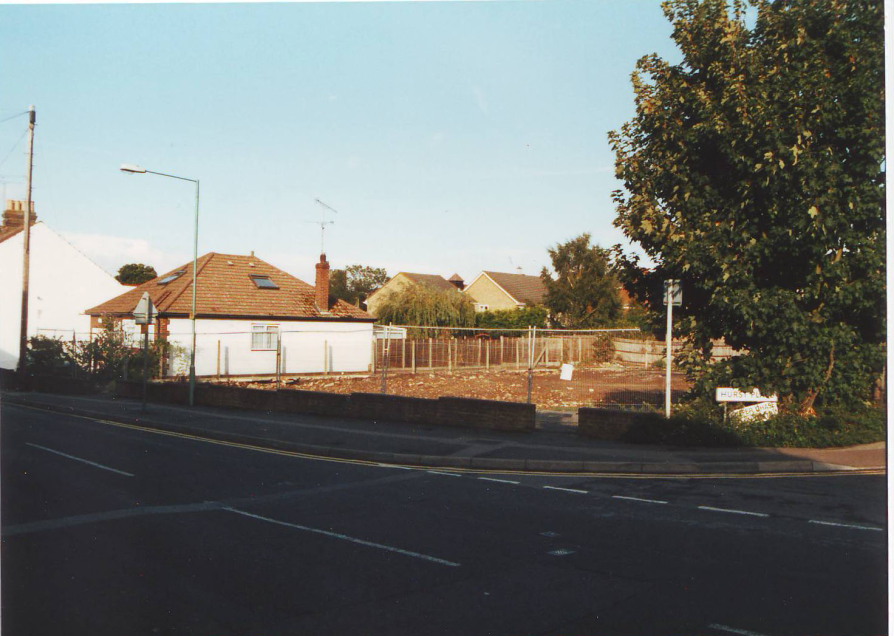I was born in Gillingham, but my connection with Rainham began early. One of my friends at Byron Road Primary School was Brian Jobber, who lived in Pump Lane, and when I cycled to his house we often Went to the centre of Rainham. As a teenager I joined the church youth club, held in the church school at the top of Station Road, and run by Captain Ambrose of the Church Army.
He was a very friendly and approachable man, who got on well with teenagers, and when he married, the youth club members made a collection for a wedding present for him and his bride. Friends I met at the club included Dave Turner, Bob Wicks, Johnnie Wood and Tom Stonehouse. In the early 1950s Reverend Jordan was the vicar at St Margaret’s Church. He was later promoted to the post of Canon at Rochester Cathedral and replaced at Rainham by Reverend Clifford.
My family had a connection with Rainham from the 19th century. One of my great-grandfathers, Thomas Wakefield (1846-1928), was the publican at the Three Mariners in Lower Rainham and his daughter, Eva, my grandmother (1876-1970), was a pupil at the church school in the 1880s. My days at the youth club were interrupted by National Service in the Royal Navy, but soon after my return and back at the club in 1957 I met the girl who became my wife, Pat Swallow, who lived in Solomon Road. We were married at the church in 1960 and the reception was held at the Green Lion. So this year we have celebrated our diamond anniversary.
The Green Lion pub in 2001
Some of my outstanding memories of the 1950s are the cinema, The Royal, in the High Street often known as the ‘bug hutch’, which had the innovation of double seats, which appealed to young cinema goers. The cinema was demolished in 1966 and is now the site of Lukehurst’s Furnishings.
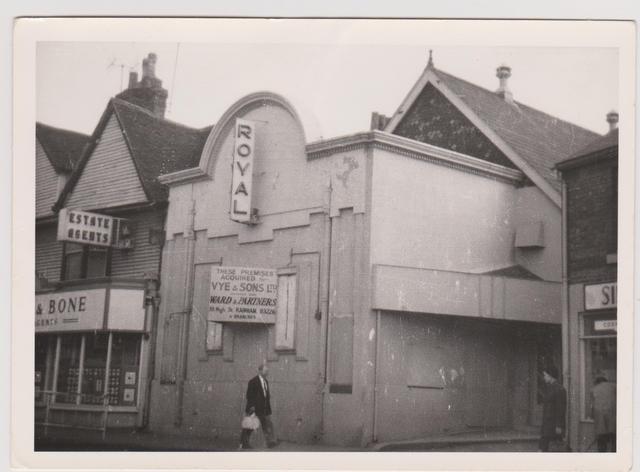
The Coop was a dominant feature of Rainham life, with the grocery shop near the top of Station Road and a larger store in the High Street, with furniture, kitchen equipment, clothes and a branch of the bank. Much of this area is now the site of the Health Centre. Across the road stood grocers Vye and Sons, now a car showroom, next to the Green Lion. Two other venues, now demolished, attracted teenagers for dances, parties and other functions, the hall above the Coop shop in the High Street and the Church Hall in Orchard Street, on the site of what is now the entrance to Hurst Place.
Photo below of the site following demolition of the old Church Hall in Orchard Street in 2001.
Same site once construction had started
Buses were a frequent sight in the 1950s, run by Maidstone and District Motor Company and Chatham and District Traction Company. The latter company had five routes in the Medway Towns and number 2 terminated in the Webster Road cul-de-sac.
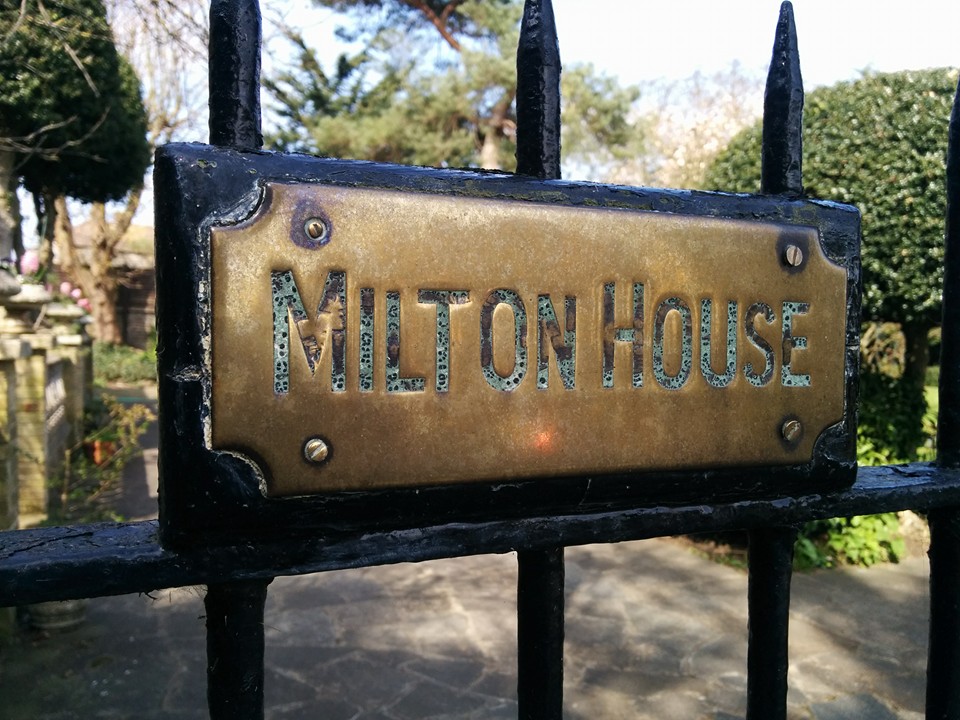
The A2 became quite busy during the 1950s and early 1960s before the M2 opened in l967. Trains were less frequent before 1959. Before then electrification went only as far as Gillingham and the old Victorian station at Rainham relied on steam trains to Victoria, or a change at Gillingham for the Charing Cross line.
Photo of Rainham station in the 1980s
Photo of M2 Farthing Corner services in 1960s known as Top Rank Services
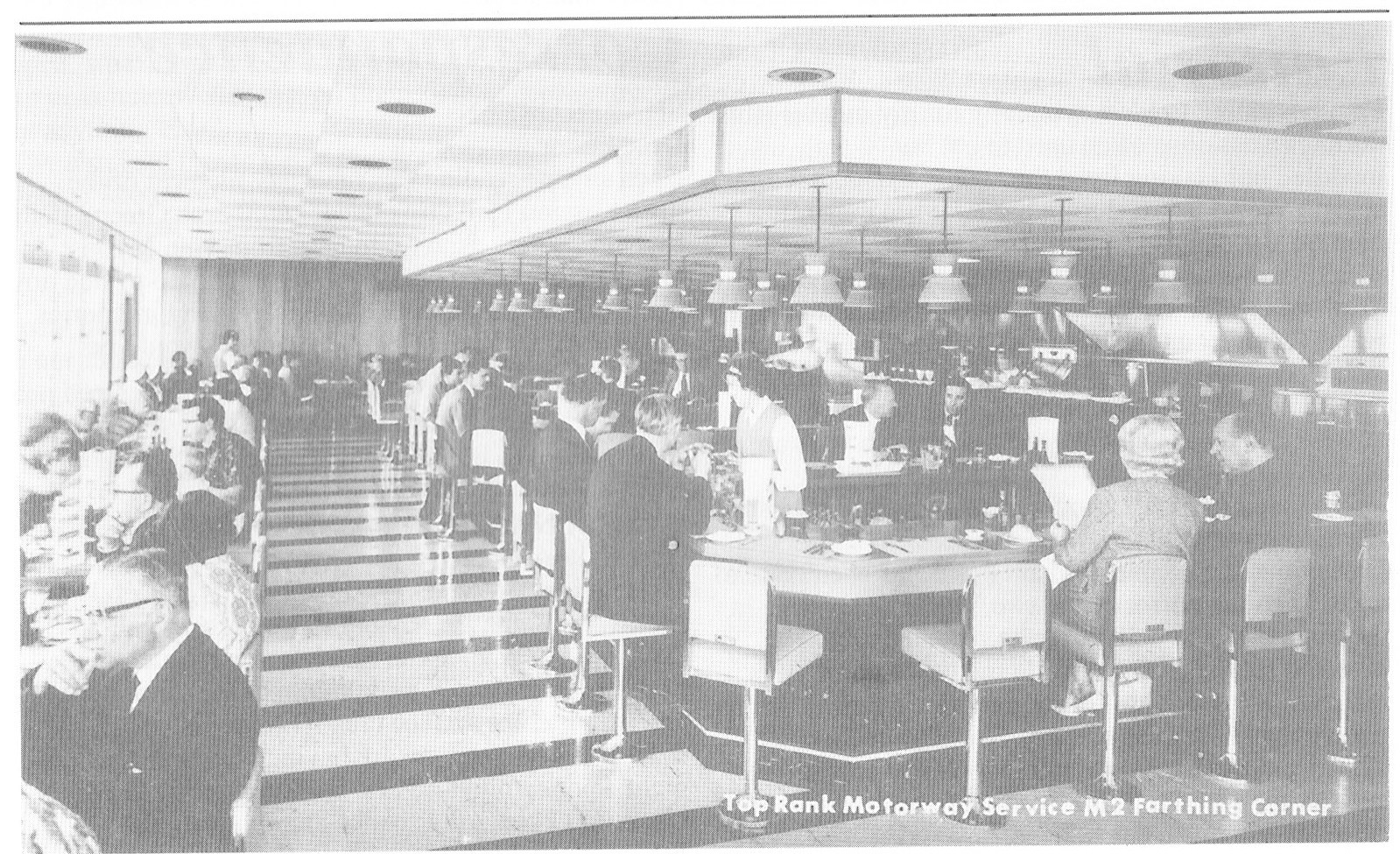
To conclude with a later memory. In the summer of 1967 a 30 mile night walk to raise money for St. Margaret’s Church began at the church at l0p.m. and the route led to Key Street, then the A249 towards Maidstone, turning right through the villages of Burham and Wouldham, on to Strood and along the A2 back to Macklands in Station Road, the home of the Mackay-Miller family. Mr and Mrs Mackay-Miller, looked after the walkers very well by driving round the route and serving hot soup. I welcome any comments, including possible corrections in the next issue.
Arthur Kimber
22 Asquith Road Wigmore
(note: original reference to Tudor Grove changed to Hurst Place for Church hall location thanks to Maria Jarvis for spotting)


















































































































































